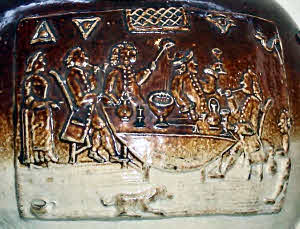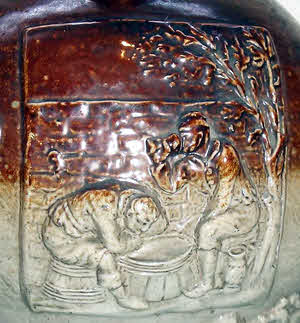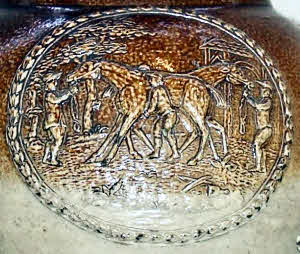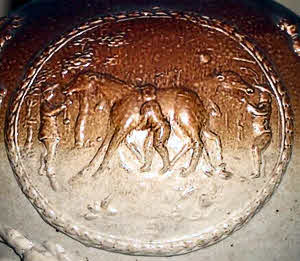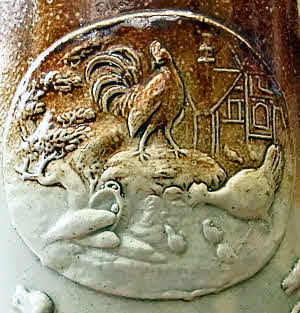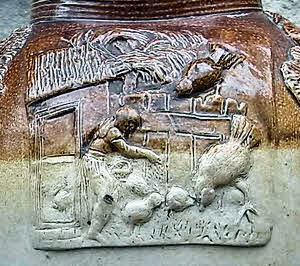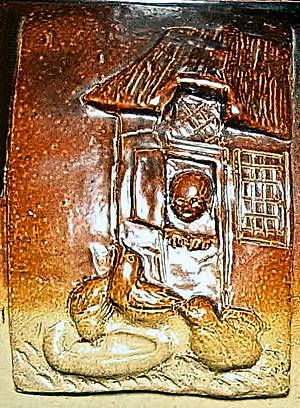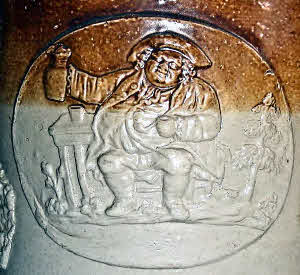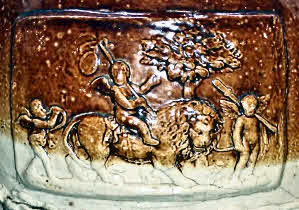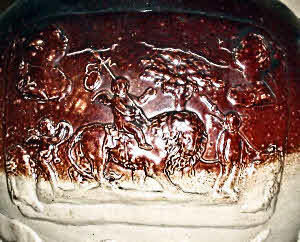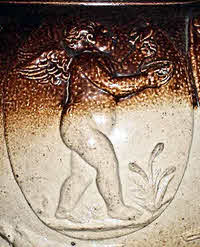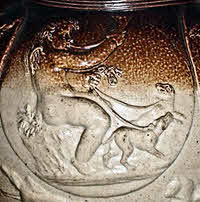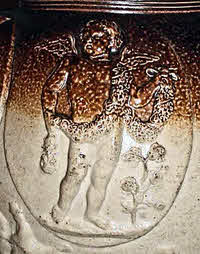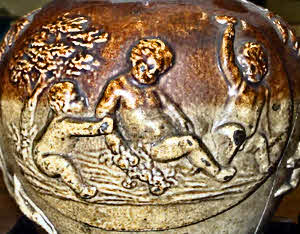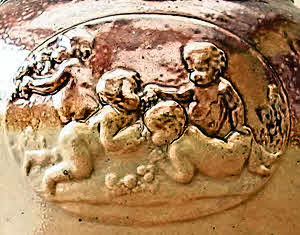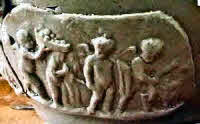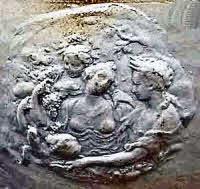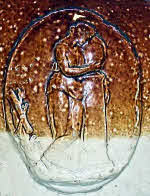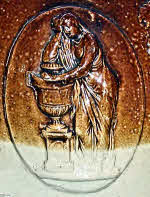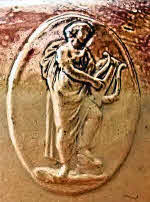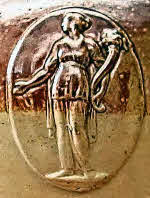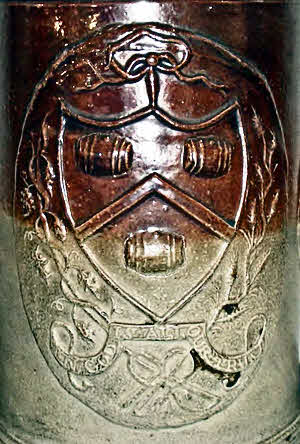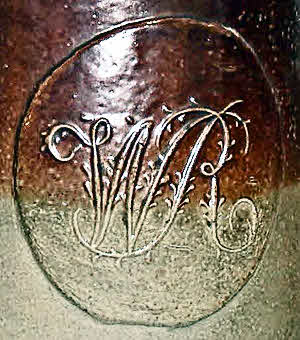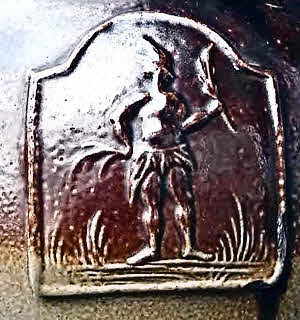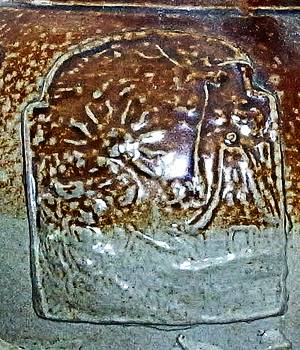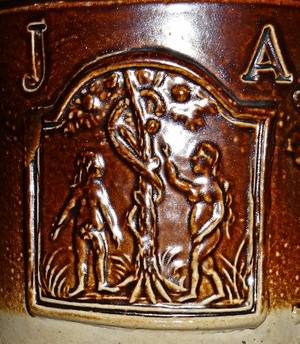Mortlake Plaques
Click on any image to view a larger version
| Punch Party. Earliest version found on Sanders (presumed) and J.K. marked jugs. Also on tankards, and loving cups. |
Two boors. Derived from Teniers print?. Earliest version found on Sanders (presumed) and Kishere Moatlake marked jugs, tankards, loving cups and tobacco jars. |
|
| Horses and grooms. Recorded on baluster shaped jugs with unreeded necks and variant right (worn out mould?) recorded on globular shaped jugs with reeded necks. The plain necked baluster jugs differ from those used with other plaques in having a more globular shaped upper section. Are they earlier or later? The sole hall marked example seen is dated 1813. All of the globular shaped jugs have the typical early Kishere windmill but no marked examples are known. |
||
| Cock on a dung heap. Recorded on baluster and globular shaped jugs. |
Feeding the chickens. Recorded on globular shaped jugs and variant (click button below) with added impressed flowers on a goblet. |
|
| Birds drinking. Only recorded on one globular jug with Feeding the chickens plaque (hall marked 1809). A variant (copy?) is also recorded on a presumed Vauxhall jug ex M. Bimson collection. |
Toby Fillpot. Sprig derived from an etching by Robert Dighton of 1786? and previously used on white stoneware jugs by the Turners of Lane End Recorded on baluster and globular shaped jugs and tobacco jars and both Kishere and Kishere Moatlake marks. Also used in non plaque form with same marks. |
|
| Cupids Procession. Recorded with and without royal heads on both baluster and globular shaped jugs. A globular jug with royal heads is recorded with J.K. mark. Who is represented on these jugs? The upper pair are surely King George III and Queen Charlotte. The lower pair resemble Louis XVI of France and Queen Marie Antoinette, executed in 1793 but they could be the Prince of Wales and Princess Caroline of Brunswick who married in 1795 or even the young King and Queen when they married in 1761. Globular jugs without royal heads are recorded with Kishere and Kishere Moatlake marks. |
||
| Putto panels. Recorded together on globular shaped jugs in order shown. First two also occur on their own. |
||
| Drunken Eros? after Wedgwood Recorded on two small globular shaped jugs. |
Group of 4 putti (after Wedgwood) Recorded on two baluster shaped jugs, one tankard, and white vase? in Mortlake church. Also as sprig on 1 pint low jug marked “Kishere”. | |
| Unidentified classical group. Recorded on one baluster shaped jug and one small globular shaped, “Kishere”marked, jug. |
Marriage of Cupid & Psyche (after Wedgwood). Recorded only on the same baluster shaped jug. |
Unidentified classical group. Recorded on two large baluster jugs each with Punch party and Cock on Dunghill plaques. |
| These may be found flanking larger plaques. The first two to the left and right of Cupids procession and Punch party plaques. The last two flanking a plaque of putti. | ||
| Vintners arms recorded on two tankards, One (ex Bimson collection) coupled with WR plaque the other (Brighton Museum) marked “Kishere Moatlake” and dated 1830. | ||
| Native American holding tobacco plant. Supplementary panel recorded only twice on globular shaped jugs with Two Boors plaques. |
Man fishing outside house. Supplementary panel recorded only twice: on baluster shaped jugs with first and last listed Punch party variants. A sharper version of the same plaque was illustrated by Derek Askey (Stoneware Bottles 1500-1949, page 134) on a 1756 dated mug. |
|
| Adam & Eve Only one example seen, on a 6.5 inch high glass bottomed tankard. Inn sign? |
||
